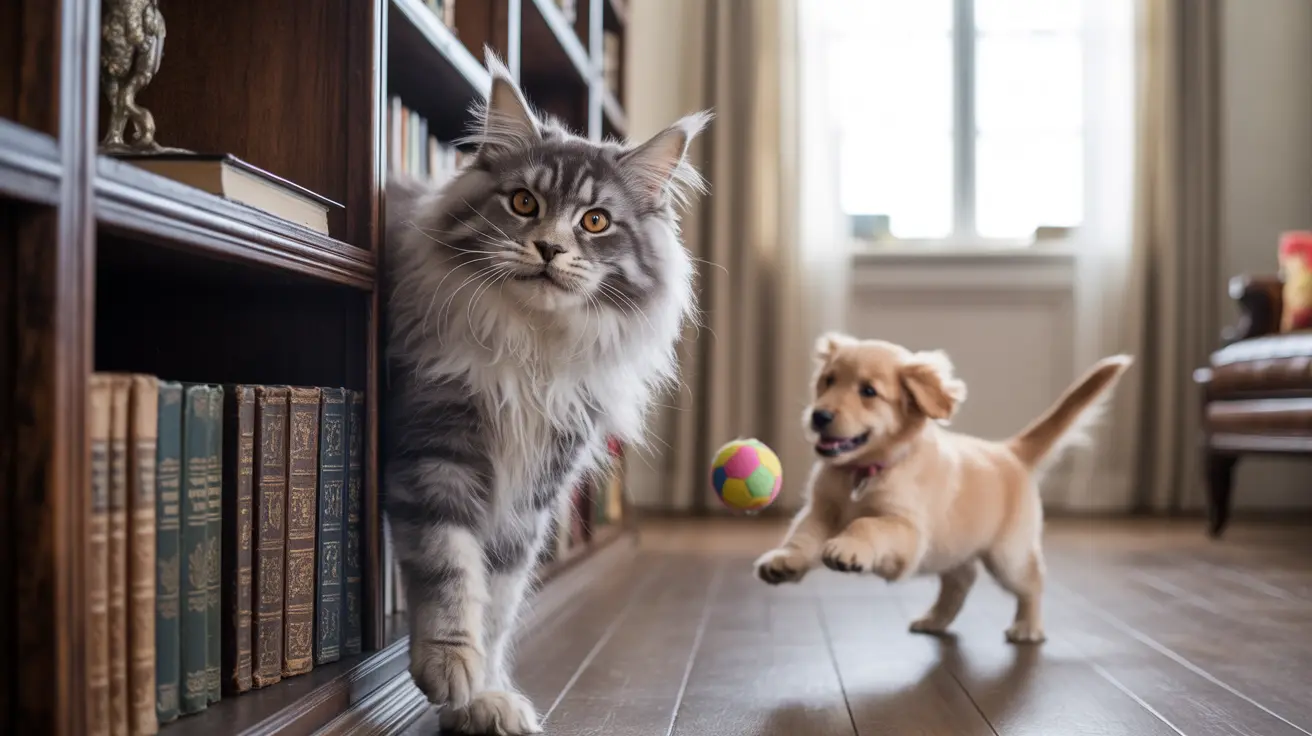Ever wondered about the complex relationship between cats and dogs? Understanding how cats see and perceive their canine counterparts can help pet owners create more harmonious multi-pet households. While cats and dogs can certainly become friends, their relationship is shaped by distinct biological differences, communication styles, and instinctual behaviors.
In this comprehensive guide, we'll explore the fascinating way cats perceive dogs, backed by scientific research and expert insights. We'll delve into their unique communication methods, natural instincts, and the factors that influence their interactions.
The Fundamental Differences in Perception
Cats possess highly sophisticated senses that shape how they view and interact with dogs. Their acute sense of smell immediately tells them that dogs are different creatures, while their superior night vision and sensitive hearing pick up on subtle differences in movement and vocalizations.
When a cat encounters a dog, they primarily assess the situation through:
- Scent recognition and marking behaviors
- Visual cues and body language
- Vocal communications and sound patterns
- Movement patterns and territorial signals
Natural Instincts and Species Recognition
Cats instinctively recognize that dogs belong to a different species. This recognition stems from:
- Different pheromones and scent markers
- Distinct social behaviors and hierarchical structures
- Varying territorial and hunting patterns
- Unique communication methods and body language
Communication Barriers and Misunderstandings
One of the biggest challenges in cat-dog relationships stems from their different communication styles. While dogs are generally direct and demonstrative, cats tend to be subtle and nuanced in their signals.
Common communication mismatches include:
- Tail movements (friendly in dogs, often threatening in cats)
- Direct eye contact (normal for dogs, challenging for cats)
- Play behaviors (rough in dogs, usually gentler in cats)
- Personal space preferences (pack-oriented vs. territorial)
Building Positive Relationships
Despite their natural differences, cats and dogs can develop strong bonds when properly introduced and socialized. Success factors include:
- Early exposure during critical socialization periods
- Controlled, positive interactions
- Proper environmental setup with escape routes
- Consistent positive reinforcement
- Respect for each animal's personal space
Creating a Harmonious Household
To help cats and dogs coexist peacefully:
- Provide separate resources (food, water, litter boxes)
- Create vertical spaces for cats to retreat
- Maintain consistent daily routines
- Supervise initial interactions
- Reward calm, friendly behavior
Frequently Asked Questions
How do cats perceive dogs, and what signs indicate they recognize them as different species?
Cats recognize dogs as different species through scent, visual, and behavioral cues. Signs include initial wariness, different greeting behaviors, and distinct territorial responses. Cats may also display specific body language like elevated tails or flattened ears when encountering dogs.
Can cats and dogs be socialized to live peacefully together, and what are the key steps for a successful introduction?
Yes, cats and dogs can be successfully socialized. Key steps include gradual introduction, supervised meetings, positive reinforcement, and ensuring each pet has their own safe space. Early socialization during kittenhood/puppyhood yields the best results.
Why do cats often display defensive behaviors around dogs, and how can these reactions be minimized?
Cats display defensive behaviors due to size differences, unfamiliarity, and instinctual responses to potential threats. These reactions can be minimized through proper introductions, positive associations, and ensuring cats have escape routes and high places to retreat.
What are some common body language miscommunications between cats and dogs, and how can owners address them?
Common miscommunications include tail wagging, direct eye contact, and play behaviors. Owners can address these by supervising interactions, interrupting inappropriate behaviors, and helping each pet learn to read the other's signals.
How can I help my cat and dog develop a positive relationship, considering their natural instincts and differences?
Foster positive relationships by respecting each pet's space, providing separate resources, rewarding calm behavior, and allowing natural bonding to occur at their own pace. Consistent routines and supervised interactions help build trust over time.
Remember, every cat and dog is unique, and their relationship will develop based on individual personalities, past experiences, and the environment you create for them. With patience, understanding, and proper management, cats and dogs can form lasting friendships that enrich both their lives.






